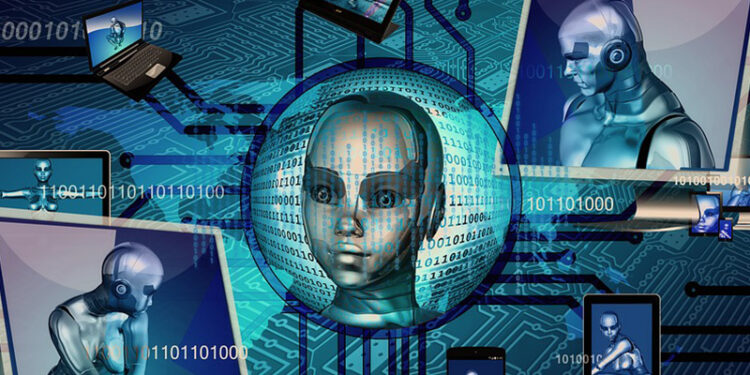According to Gartner, the technological keys for 2018 will be marked by trends such as artificial intelligence, IoT, intelligent applications, digital twins, edge computing, immersive experience, cybersecurity or blockchain, among others.
Like every year, we analyze what will be the technological trends that will continue to revolutionize our lives based on the annual report of the consultancy Gartner. Technologies that have disruptive potential for the next five years.
According to the consultant, these are the top 10 strategic technology trends for 2018:
Artificial Intelligence
The creation and implementation of systems capable of learning, adapting and acting autonomously has been a great challenge for companies. The use of AI aims to improve decision-making and reinvent existing business models and ecosystems, and it will undoubtedly become the main concern by 2025.
“AI techniques are evolving rapidly and organizations will have to invest significantly in skills, processes and tools to successfully exploit these techniques and build AI-enhanced systems”, in this scenario David Cearly of Gartner points out.
Intelligent applications and analytics
For years to come, almost all applications and services will have some level of AI built in, and many will not be able to continue without this machine learning technology. This will lead to a new stage that will transform the nature of work as we know it, as well as its structure.
“Smart apps need to be explored as a way to increase human activity and not as a way to replace people,” says Cearley.
Internet of Things (IoT)
Try to integrate in physical and everyday objects the ability to offer advanced behaviors and interact naturally with the environment and users. That’s the key. We see examples in autonomous vehicles, robots and drones. This trend is advancing more rapidly and its inclusion in daily life is gradually becoming a reality in the lives of many people.
Digital Twins
This is the digital representation of a real-world entity or system. Digital Twins have the ability to significantly improve decision-making within companies and can be used to understand the state of affairs, respond to changes, improve operations and add value.
“Urban planners, digital marketers, healthcare professionals and industrial planners will benefit from this change in the long term”, Gartner representative explains.
Edge Computing
It is a computer topology in which the processing of information, the collection and delivery of content are placed closer to the sources. Connectivity and latency challenges, bandwidth constraints, and increased built-in functionality at the edge favor distributed models. Companies will need to start using edge computing design patterns in their infrastructure, specifically for those with significant IoT elements.
Conversational platforms
One of the biggest changes that technology has introduced is the transformation in communication between human beings. Conversation platforms will be responsible for driving the next big change and, in the coming years, will become a primary design goal for user interaction.
“The challenge facing conversation platforms is that users must communicate in a very structured way, and this is often a frustrating experience”, David Cearly account.
Immersive experience
At present, the virtual reality (VR) and augmented reality (AR) market are still in a primitive and undefined phase, which results in many new VR applications being of little real value to businesses outside of advanced entertainment, such as video games or 360º spherical videos.
For this to evolve, companies must examine specific real-life scenarios where these new technologies can be applied, improving design processes, training and visualization.
Blockchain
Blockchain technologies are an outlet of current centralized transaction and record-keeping mechanisms, and can be useful for creating a digital business base for both traditional companies and startups.
Event driven
Today, any issue within business can be digitally recorded, such as the completion of a purchase order or the landing of an airplane. With the use of IoT, Cloud Computing, Blockchain, Big Data Management and AI, any unforeseen business can be quickly detected and analyzed in greater detail.
Cyber security
Given that we live in a world where attacks through digital platforms are continuous, helping to create a secure and closed network is of great importance. For digital business initiatives to be carried out securely, leaders in security and risk management must adopt a continuous adaptive risk and trust assessment approach.
For now, it seems that these initiatives will be the ones that will take center stage in the world market. We’ll see what his line of evolution is.








